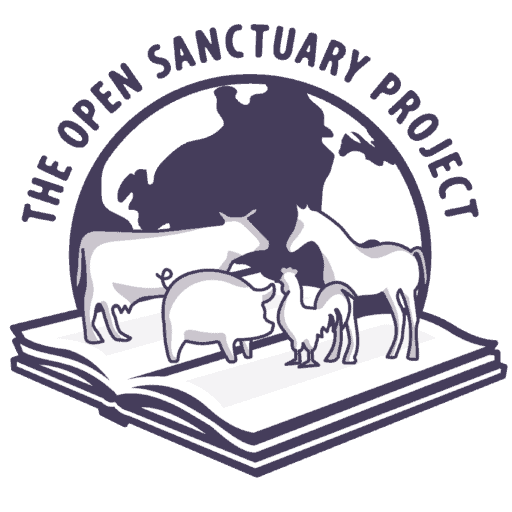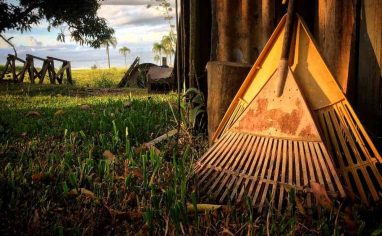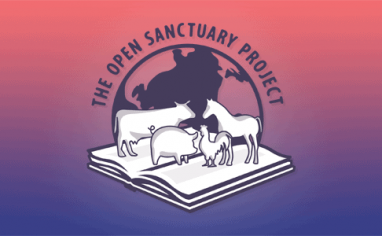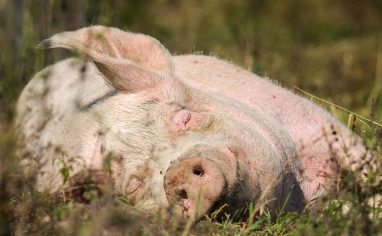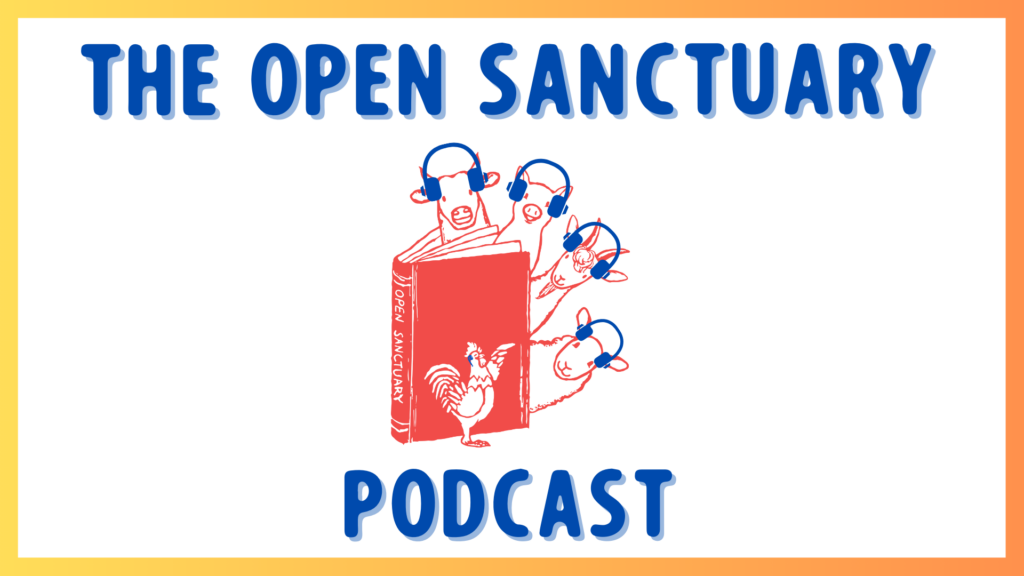
Subscribe To The Open Sanctuary Podcast
If you’d like to get the latest episodes of The Open Sanctuary Podcast, you can subscribe for free on all Podcast platforms, including Apple Podcasts and Spotify!
Episode Notes
Senior Advisor Tara and NonprofitA non-governmental organization whose primary purpose is something other than selling goods or services. Specialist Julia talk about the many considerations that go into protecting avian residents from predators. We’ll touch on the risks that predators present, how to familiarize yourself with predator types in your environment, and how to site avian living spaces appropriately. We’ll also talk about the importance of impenetrable overnight living spaces and infrastructure that can secure the perimeter of avian living spaces in the daytime. Finally, we also talk about protocols caregivers can use to maintain this infrastructure and ensure ongoing predator-proof living spaces!
—
This Episode’s Referenced Open Sanctuary Project Resources:
- Predator Proofing For Bird Residents At Your Sanctuary
- The Caregiver’s Guide To Developing Your Observation Skills
- Good Home Series For All Covered Species
- Creating An Enriching Life For Chickens
- Compassionate Wildlife Practices At Your Animal Sanctuary
- Resources On Avian Influenza
Episode Transcript (Auto-GeneratedThe following content was transcribed through an automated process and may contain transcription errors or misspellings.)
Julia Magnus: Greetings sanctuary friends. We’re here to talk about a new resource that we put out together. I’m Julia Magnus, the nonprofit specialist at the Open Sanctuary Project, and I’m with Tara Hess, our senior advisor. Tara and I have had such a strong collaborative relationship with work. In addition to being a nonprofit person, I am also a bird nerd. Tara is clearly also a bird nerd. So we have shared our fellow bird nerdery and collaborated on multiple resources together. The most recent one that we have done is one on predator proofing for avian residents at your animal sanctuary. So let’s talk about why avian residents require special care when it comes to predator protection. Tara, I’m sure you have feels.
Tara Hess: Yeah. So, we point this out in the resource, but obviously ostriches and emus require predator protection, but aren’t exactly who we’re talking about here. So, we’re talking about chickens and turkeysUnless explicitly mentioned, we are referring to domesticated turkey breeds, not wild turkeys, who may have unique needs not covered by this resource. and ducksUnless explicitly mentioned, we are referring to domesticated duck breeds, not wild ducks, who may have unique needs not covered by this resource. and geeseUnless explicitly mentioned, we are referring to domesticated goose breeds, not wild geese, who may have unique needs not covered by this resource. and guinea fowl and similarly sized avian species. They require a different degree of predator protection than larger mammal species. Simply because they’re tiny, they’re vulnerable, there are predators that are at risk to smaller avian species that just are not a risk to larger larger mammals. Of course, small mammals need their own predator protection, but birds are uniquely vulnerable. I think folks don’t realize just how vulnerable they are, and how robust the protection needs to be to actually be sufficient.
Julia Magnus: Yeah, I agree. Also you may very well hear in the background that we have some uninvited guests participating in this podcast who are parrot residents. So, we’re also not talking about parrots because parrots are largely kept indoors and that’s a whole another realm if you do ever bring parrot residents outdoors than the predator proofing that we’re talking about in this resource. I can’t think of a bird resident that isn’t a prey animal inherently a prey animal, right? They just are. So it’s why would we not want to make sure that they’re as safe from that as possible. So that’s why we are talking about avian predator protection. Let me go ahead and mute myself for a second because obviously everyone here has opinions about this. Where we kind of started was just knowing your environment. I am in the center of the south side of Chicago and here folks are allowed to keep chickens without restriction. One of the things that is often said is there’s no predators in the city. None. Zero.
Tara Hess: Yeah. Clearly there’s not no predators in a city. Lies. Lies I will tell you. But you live in a totally different environment where maybe predators might be more anticipated. The point is, predators are everywhere, right? Everywhere whether you see them or not. So it’s I feel rule number one is to work under the assumption that predators are around. Yes, you should try to figure out which predators are more likely to be in your area based on the habitats they live in. But I don’t have to worry about lions, but obviously if someone did, that’s good luck. You have to assume that there are predators. I think so many people think, well, I don’t see predators. Either you’re in a city and you’re told, oh, there are no predators. Or even if you’re in the I’m in a country setting where I see wildlife all the time, but even if I don’t see actual predators who might kill farmed bird species, you have to assume that they’re around. Even if you don’t see them, even if you’ve never seen them, I had never seen a fox on our property until we cared for a house rooster. Cantaloupe came and then there was just a signal put out to the universe, there’s a chicken here.
Julia Magnus: Mhm.
Tara Hess: And sure enough, the first day we put him outside with protection, with serious protection, was the first time I ever ever ever saw a fox. It wasn’t shocking to see a fox, but it was just wow. Day number one. There you go. That’s so real. I swear to God, before I lived here, I lived in kind of a suburban area but near a ravine, right? It wasn’t until I got my first rescued chickens that all of a sudden all of the predators started being, “Hey there.” So prey animals do attract predators. Even if you haven’t seen them, they’re still there. They’re going to come and they will be there. So we were talking about you were mentioning observation of your environment. So when you’re looking around what are the kind of things that you tend to look for and when you’re thinking about avian spaces and where you site them what are the kind of things that you look at? One of the things that I look at just personally when I worked at a sanctuary and also here was where can I put this space whether it’s when I worked at a sanctuary that we’re talking about a space where the birds would live all the time including overnight whereas Cantaloupe lived indoors with us but even for his daytime space it’s where where can it be where there’s close supervision, there’s serious human presence which isn’t we talk about this in the resource human presence in and of itself is not protective. It’s not going to deter every risk but I do think there’s a difference between setting up a bird living spaceThe indoor or outdoor area where an animal resident lives, eats, and rests. in an area that gets frequent traffic closer to sanctuary personnel spaces. Maybe not your neighbors because that’s a whole other thing versus we know that chickens are descended from jungle fowl and they love wooded spaces. But walking 15 minutes out into the woods and plunking down a chicken house would probably have some different challenges than if you tried to set up the wooded area in a bring the woods to the space. I feel that makes no sense what I said, but.
Tara Hess: I feel that makes.
Julia Magnus: balancing those things. I feel that makes a million percent sense to me because one of the other podcasts they’ve done and a lot of work that our colleague Amber Barnes has done is on enrichment. All of this makes sense. Yes, it is possible to keep chickens indoors thoughtfully. This was a resource that you and I worked on as well, and there’s a whole thing on that that’s available for folks who want to think about that. But the siting thing and the enrichment and thoughtfully placing avian living spaces in a way that you minimize any potential for conflict feels the first step in thoughtful predator proofing to me. In my area obviously we have raccoons, we have rats, we have coyotes, we have occasionally I’ve never seen one, but apparently some folks have seen foxes around here. We also have aerial predators. So all of these buddies can potentially come into conflict with our avian residents, which we want to avoid. There’s also the question of human risk, right? In Chicago, it’s legal to have roosters. It’s totally legal to have all the birds you want, which doesn’t mean you should do it, but you can. But there’s also the potential for human conflict if somebody happens to not our birds. They don’t the noise. They have feelings. You have to think about those things thoughtfully as well. So, in addition to not let’s not plump down an avian living space in the middle of the woods by a raccoon’s house, let’s also not maybe put them right next to the neighbor’s house if you have a rooster flock.
Julia Magnus: So, that’s a whole thing. So siting thoughtfulness to your community and your neighbors is important as well as just thinking about your wild living neighbors who are really there. They really exist. There really are predators everywhere.
Tara Hess: So then the next kind of thing is when you’re securing folks and building spaces for them, how do we keep them safe overnight? Yeah. So I feel this is it’s all important, but I feel the overnight accommodations are the thing that is sometimes surprising to folks. People will be, “Oh yeah, they need predator proofing,” but they don’t realize how tightly enclosed the space needs to be physically without breaches to keep predators out. So we’re really talking for some species the degree of protection they need overnight may be the same as they need during the day, but for other species maybe people think, oh, a gooseUnless explicitly mentioned, we are referring to domesticated goose breeds, not wild geese, who may have unique needs not covered by this resource. or a turkeyUnless explicitly mentioned, we are referring to domesticated turkey breeds, not wild turkeys, who may have unique needs not covered by this resource.. These are bigger birds. Some of the predators that might go after a smaller bird maybe aren’t going to go after a turkey. Maybe that is true, but people don’t realize how vulnerable these birds are overnight. They cannot see well. They’re enclosed in a space that they can’t get out of. If a predator comes in, a weasel, your flock can be wiped out depending on what predator gets in. So those overnight accommodations are so important. Our general recommendation, which is a general recommendations that other folks recommend as well, is to avoid gaps that are the size of a quarter, a US quarter or bigger because some species of weasels can fit through very tight spaces and can really cause so much harmThe infliction of mental, emotional, and/or physical pain, suffering, or loss. Harm can occur intentionally or unintentionally and directly or indirectly. Someone can intentionally cause direct harm (e.g., punitively cutting a sheep's skin while shearing them) or unintentionally cause direct harm (e.g., your hand slips while shearing a sheep, causing an accidental wound on their skin). Likewise, someone can intentionally cause indirect harm (e.g., selling socks made from a sanctuary resident's wool and encouraging folks who purchase them to buy more products made from the wool of farmed sheep) or unintentionally cause indirect harm (e.g., selling socks made from a sanctuary resident's wool, which inadvertently perpetuates the idea that it is ok to commodify sheep for their wool).. So, it’s so important to create those spaces that don’t have breaches, to maintain those spaces and look at them closely to make sure breaches aren’t developing, and then also to make sure you’re getting your birds inside before they’re particularly vulnerable. They’re vulnerable during the day, but once dusk starts coming, they’re just so vulnerable. This is one of the reasons why in the resource we talk about, there’s all sorts of technology you can get. One thing is those automatic hoop door opener and closers. That might seem something that’s really convenient and, oh, you can set it on a certain time, but you could be locking someone out. It could be malfunctioning. So, you can create this space that’s very protective, but if not everyone is in it, it’s not going to do them any good. Sorry, little tangent.
Julia Magnus: No, that’s a real tangent. I have never I also have a holy terror of those automatic closing doors because I’m afraid what if it shuts while someone’s partway in? I’ve never used one, so I don’t know.
Tara Hess: I haven’t either. I never have. It just seems.
Julia Magnus: why wouldn’t I just go do that and make sure that everyone’s inside?
Julia Magnus: Use that as an opportunity to check on everyone, to check on the space. Your automatic door closer is not going to check to make sure that a breach hasn’t developed, right?
Julia Magnus: Or to make sure that everyone’s healthy and looking okay. Bedtime is a really there are other important things that you can incorporate into the bedtime routine.
Tara Hess: besides just getting them in.
Julia Magnus: Yeah. So this is one of the things in addition we also discuss in the resource materials that can be used to make impenetrable overnight spaces for birds including flooring. We have some graphics on that question that you can check out if you take a look at the resource. Also ways that you can modify materials you may have on hand that might make them more secure. But yeah, the protocol of a closing list is another thing that we mentioned. So it’s not just infrastructure, it’s also practices, right? So when you’re closing folks in, you have done this countless times, I’m sure. So what are the things that you would look for when you’re doing a closing list? What I would look for is first of all I’d make sure everybody is accounted for. You know who lives there. You make sure they’re inside. Make sure they’re looking okay because if someone’s not looking well, that might be a good time to intervene in whatever way is appropriate. Looking at the living space just to check to make sure that there isn’t a breach that has developed, to make sure that I’m used to windows being covered with galvanized hardware cloth because screens aren’t protective. But you might need to leave windows open to ensure proper ventilation for your residents because that’s a whole other thing. So checking to make sure that that’s not getting peeled back, that screws haven’t come loose. If you have I haven’t I tend to I’m a super cautious person, so I want every window covered if there’s a chance it could be open, especially in a setting. Here with Cantaloupe, it would have been a bit different because it was just me basically doing all the stuff. But in a setting where you’re part of a team and someone might open, you can be, oh, all windows, this window never gets opened, someone could open that window and if it doesn’t have a cover. So just checking those things, checking that some random door that’s never opened hasn’t been opened, that things are actually latched, as opposed to just pushed shut. I really had it ingrained in my brain and when I trained folks to do closing to really just look all around for any potential hazard. Then also to make sure food is picked up, eggs are collected, anything else that’s going to attract other animals, whether they’re prey species or predators. Because yes, caring for prey species is going to attract predators. But also, some of the things that we need to do to care for our residents, whatever the species may be, you’re putting down food, you’re putting down bedding, which can create a nice cozy environment that’s going to attract other prey species, which in turn is going to attract more predators. So, you’re just really creating a little ecosystem where those predators you never saw and you swore weren’t in the area now this is a very hospitable place to be and might start coming out of the woodwork. Speaking of out of the woodwork, also really looking closely for signs of rats because, and I don’t mean to villainize rats because they get a really bad rap, but they are very dangerous when it comes to avian residents. They can kill them. They are a predator of chickens, of other smaller birds, and even bigger birds, they can really injure bigger birds who they may not outright kill. It’s really hard to create a space that is totally impenetrable to rodents, especially if it’s a space that’s opened up in the daytime, rodents are going to get in. So, then you have to create this indoor space or the overnight accommodations that they can’t then build a home in the walls. There are these nooks that they can hide in because you could have this space that can’t let anybody in once it’s sealed up, but if you’ve already let them in and then you’re closing them in with the bird residents, that’s going to create a serious problem. So, making sure everybody who enters the space and cares for the residents is familiar with the signs of chewing if rats seem to be chewing into the space, looking for droppings. That’s also helpful outdoors, paying attention to scat to figure out, you might not see the predators come in, but you might see evidence that they had been there. That sort of thing. It probably warrants a mention that we do have resources on compassionate wildlife practices. At this point.
Tara Hess: Yeah, I feel we maybe should have led with this. I think for some folks who are familiar with our work, it goes without saying, but the wild animal species that come onto sanctuary grounds, live around sanctuary grounds, they are worthy of respect and consideration. This is not I love the way that you worded it in the resource where this is not a battle that we’re fighting. It’s about preventing conflict as much as you can and finding compassionate ways to keep residents safe while also keeping wildlife safe because we have a responsibility to them. We’ve set down a sanctuary on their home. You can’t just disregard their needs, but you also need to take measures to be, you do not need our residents.
Julia Magnus: That’s so real. I remember at one point working with a Chicago resident who had adopted some chickens and building predator proof space for those residents. While we were doing that, there was, we, she’d ordered us pizza. So, this is Chicago pizza rat, right? This rat totally came up and was eating the pizza and I was, “Oh, hey, this is why we’re doing this, hello Chicago pizza rat.” This is the whole thing, they are here. We don’t need to harm them. We just need to figure out how to protect our residents in a way that initially with sighting decisions, thoughtful sighting decisions are going to minimize conflict and then be with impenetrable overnight housing is going to protect them. The rodent discussion is a whole other thing, but there are ways to compassionately work around those populations in ways that are also protective of our residents. But also there’s the whole question of daytime with residents, right? That kind of leads into that, right? Because the daytime thing is a whole other issue. During the day, you have not just you’ve got aerial predators, you’ve got diggers, you’ve got jumpers, you’ve got folks who can do all kinds of things who might be interested in potentially harming some of your avian residents. So, how do we work on that infrastructure-wise?
Tara Hess: I think we talk about this in the resource. I feel there’s a bit more variation in what folks do during the day. Whereas at night it’s it doesn’t matter who your residents are, where you are, you really need those impenetrable overnight accommodations. During the day, I do think there is some wiggle room depending on the species you care for, maybe the amount of supervision, the types of predators, but that being said, you still have to offer protection. So, just being, well, I’m standing right here and so I’m just going to let everyone run loose in this outdoor space, that doesn’t offer any protection actually. Maybe you standing there will deter someone. Maybe if someone came up, you’d be able to intervene. Maybe not. Maybe you’d be able to intervene after someone’s already killed or seriously injured. So, I feel I struggle a little bit more with this one because it’s balancing the recognition that yes, maybe there is a little bit more room for variation, but this idea that they don’t need protection or that just watching them is enough protection or just some chicken wire fencing is enough protection certain things just won’t cut it which we talk about in the resource.
Tara Hess: So I think it’s important you already mentioned this to focus on the big three things: how are you going to prevent aerial attacks, how are you going to prevent climbing over and jumping, and how are you going to prevent digging. So how tall does your fence need to be? You need to have some sort of barrier around your residence to offer any sort of protection. How tall does it need to be? How big can the gaps be? This is where maybe some variation comes in. How are you going to protect against aerial predators? Are you going to use netting? Are you going to have a fully enclosed aviary which might be necessary especially for smaller species or flighted species who you can’t contain. If you can’t contain them, you can’t protect them. That factors in. Then also the digging something a skirt or burying some hardware cloth so that when someone does try to dig, they’re deterred from digging. They hit something that makes them stop and then they move on.
Julia Magnus: Yeah. All of that is so real to me. I feel I’m, obviously we work from home. I’m right by my birds at any given point in time, but I still give them predator protection. Because during the day, I was literally on the phone with McKenzie at one point and a Cooper hawk was, “Hey buddies, you look tasty.” I’m, “Okay. It’s a good thing y’all are in enclosed and netted runs.” Yes. And we should also. They’re so fast. I don’t know if people really realize if you haven’t seen how fast a hawk is. I was outside with Cantaloupe when he was still alive. He was in a covered space. I was sitting outside of the space still just hanging out and a hawk flew down and took a rabbitUnless explicitly mentioned, we are referring to domesticated rabbit breeds, not wild rabbits, who may have unique needs not covered by this resource. right in front of me. He didn’t the hawk didn’t care that I. It happened so fast. If the rabbit had been someone else that I had, I didn’t want to see the rabbit killed, obviously, but if the rabbit had been Cantaloupe, it’s I would not have been able to do anything at all. It’s so quick. It’s so sudden. I was sitting outside on the phone on the deck talking loudly as I do because you know how I am. I was, “Oh my god, McKenzie, it’s a hawk now.” I was, “Whoa, this is such a huge thing.” So supervision is not protection. Cameras, you can use cameras to learn about your environment. Use it is another way to observe and figure out who your potential threats may be. Those are also not protection.
Tara Hess: right?
Julia Magnus: Then you can do things enriching elements and spaces for residents evergreen vegetation or other structures that they can use for fun or for hiding if they feel that they need to. But that’s still not protection because I have seen hawks sit there and wait.
Tara Hess: Yes.
Julia Magnus: And just watch until whatever they want is coming out and then that person comes out and then it’s done so fast just as you said.
Julia Magnus: Also, it probably warrants a mention that we’re not a big fan of guardians, livestockAnother term for farmed animals; different regions of the world specify different species of farmed animals as “livestock”. guardians in the form of either dogs or other, it’s very frequent in backyard chickenThe raising of chickens primarily for the consumption of their eggs and/or flesh, typically in a non-agricultural environment. context that you’ll see things about roosters being protectors of their flocks, but they lose their lives as a function of doing that. Also dogs are not predictable around birds as a general rule and I live with both. So we interact with both in such a way that we ensure that nobody is at risk from each other. But there’s also other things to think about that predator protection isn’t inherently necessarily I would say an end all be all in terms of highly pathogenic avian influenza but it certainly can help if you have measures employed infrastructure that excludes wild living animals from avian resident spaces it certainly can help and so it probably bears a mention again that we have the HPAI resources that you and I probably spent a while.
Tara Hess: A while. It was a little thing.
Julia Magnus: Yeah. Oh, there are many. It took a while. The other thing that I realize we’ve been on this for a while, so maybe Luke’s going to have to cut some stuff. But the other thing, it’s not.
Tara Hess: inherently protective against HPAI. You might have to take other measures. When HPAI was first coming out, oh gosh, everybody needs to take measure. Even the last bigger outbreak when it was, are people going to have to get covered up what’s going to if they didn’t have covered runs. If you’re starting there are many reasons why we don’t recommend freeranging.
Julia Magnus: But if you’re starting from zero where it’s just an open space and then you find yourself in a situation where either there is a predator issue or there is an infectious disease issue whether it’s Newcastles or HPAI or whatever because there are multiple you have a lot of work ahead of you to create a space where birds can go outside safely, if that’s even possible. Whereas, if you have something already set up, if you have fencing that’s nice and tall and you’re, “Oh, nobody can get over this and this skirt is working.” Then you realize that maybe something isn’t quite working out. Maybe you have holes in the fencing, the grid is too big, or maybe you didn’t add a buried skirt. You can add those things a little easier and make these modifications to make it work in response to certain things versus just starting with nothing. If you free range, you really have no control over the environment for whatever reason you might need to control it. Yeah. That’s so real. So I think ultimately what we have learned these things through experience but also in writing these things we learn ourselves. So, the action steps that when you think about all this stuff is first use observation both to research predators in your area. You can use things supervision, observation, and cameras to learn more. At that point, you need to use that knowledge that you gain to make strategic siting decisions. Make sure your overnight spaces are impenetrable. If they aren’t, build infrastructure that is. We have a lot of materials information in that resource that can help guide you on that. For outdoor spaces, it’s trickier, but yeah, definitely infrastructure is important. Not a fan of freeranging here. Even in my little city yard, we’ve got the hawks, we’ve got the, we’ve got all the buddies coming around checking our birds out. Use your materials strategically and address all potential risks. Protocols closing lists and checking everybody at night really remains incredibly important and checking for breaches and doing routine maintenance. The other resources that are relevant to this discussion are the safe housing series that we have. We have them for virtually every farmed animalA species or specific breed of animal that is raised by humans for the use of their bodies or what comes from their bodies. resident, goats, sheep. We have it for all the major species that we cover. So, that’s for everybody, not just avians. You can search safe housing on opensanctuaryproject.org to find it. Definitely check out HPAI stuff because that’s not going away anytime soon. Good times.
Tara Hess: And the compassionate wildlife resource because I feel we alluded to this, but so much of this is about prevention. Once you have a problem, once you’ve attracted certain wild animals, you’re going to have a much harder time addressing the problem as opposed to preventing it, especially when it comes to rodents. Making sure you’re responsible with your food and you’re careful about cleaning up food and eggs and where you put your compost and how you deal with your garbage. All of that stuff really matters. Incredibly important. Incredibly important because again, we’re not here to do war with anyone. We’re here to make peace and coexist as much as we possibly can.
Julia Magnus: Wow, that was a whole thing. This is a big subject. We talked a lot. Surprisingly, the parrots didn’t. Well, they did. They did decide that I think probably we were expressing our opinion sufficiently. They clearly have thoughts of their own about this matter. In any case, it’s always a delight to talk to you. I’m so excited that we did this resource. I’m very geeked by it.
Tara Hess: Yeah. Yeah. Yeah. I’m pretty proud of it and I hope folks find it helpful.
Julia Magnus: I do too. Yeah. I just feel it’s there was a lot of love in there for everyone. So feel the love, folks.

Got A Podcast Idea? Contact Us!
If you have a topic or question you’d love to hear our staff address on The Open Sanctuary Podcast, please get in touch via our contact form!
